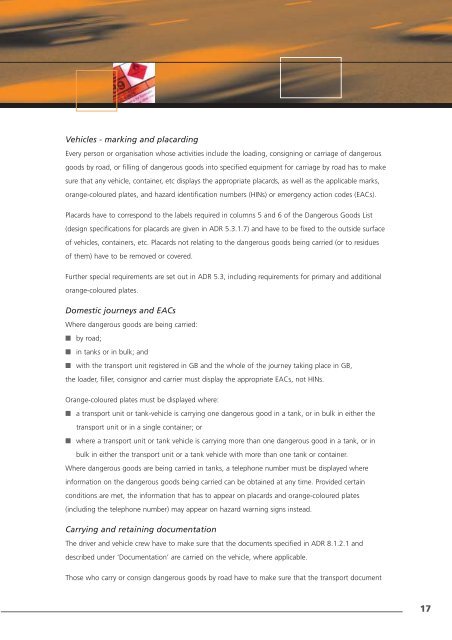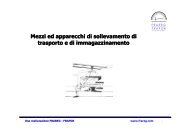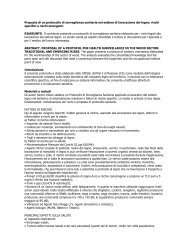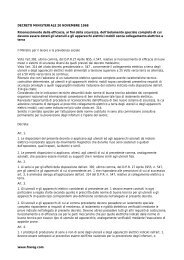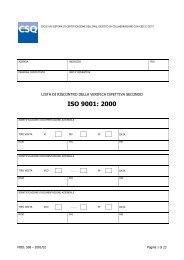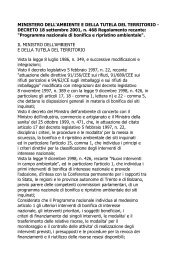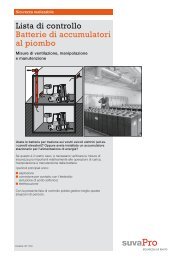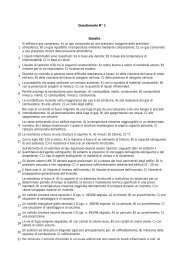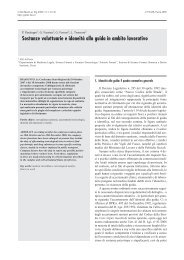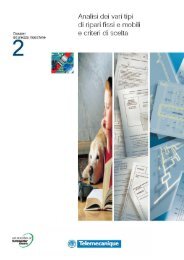Working with ADR - An introduction to the carriage of ... - everysite
Working with ADR - An introduction to the carriage of ... - everysite
Working with ADR - An introduction to the carriage of ... - everysite
Create successful ePaper yourself
Turn your PDF publications into a flip-book with our unique Google optimized e-Paper software.
Vehicles - marking and placarding<br />
Every person or organisation whose activities include <strong>the</strong> loading, consigning or <strong>carriage</strong> <strong>of</strong> dangerous<br />
goods by road, or filling <strong>of</strong> dangerous goods in<strong>to</strong> specified equipment for <strong>carriage</strong> by road has <strong>to</strong> make<br />
sure that any vehicle, container, etc displays <strong>the</strong> appropriate placards, as well as <strong>the</strong> applicable marks,<br />
orange-coloured plates, and hazard identification numbers (HINs) or emergency action codes (EACs).<br />
Placards have <strong>to</strong> correspond <strong>to</strong> <strong>the</strong> labels required in columns 5 and 6 <strong>of</strong> <strong>the</strong> Dangerous Goods List<br />
(design specifications for placards are given in <strong>ADR</strong> 5.3.1.7) and have <strong>to</strong> be fixed <strong>to</strong> <strong>the</strong> outside surface<br />
<strong>of</strong> vehicles, containers, etc. Placards not relating <strong>to</strong> <strong>the</strong> dangerous goods being carried (or <strong>to</strong> residues<br />
<strong>of</strong> <strong>the</strong>m) have <strong>to</strong> be removed or covered.<br />
Fur<strong>the</strong>r special requirements are set out in <strong>ADR</strong> 5.3, including requirements for primary and additional<br />
orange-coloured plates.<br />
Domestic journeys and EACs<br />
Where dangerous goods are being carried:<br />
■ by road;<br />
■ in tanks or in bulk; and<br />
■ <strong>with</strong> <strong>the</strong> transport unit registered in GB and <strong>the</strong> whole <strong>of</strong> <strong>the</strong> journey taking place in GB,<br />
<strong>the</strong> loader, filler, consignor and carrier must display <strong>the</strong> appropriate EACs, not HINs.<br />
Orange-coloured plates must be displayed where:<br />
■ a transport unit or tank-vehicle is carrying one dangerous good in a tank, or in bulk in ei<strong>the</strong>r <strong>the</strong><br />
transport unit or in a single container; or<br />
■ where a transport unit or tank vehicle is carrying more than one dangerous good in a tank, or in<br />
bulk in ei<strong>the</strong>r <strong>the</strong> transport unit or a tank vehicle <strong>with</strong> more than one tank or container.<br />
Where dangerous goods are being carried in tanks, a telephone number must be displayed where<br />
information on <strong>the</strong> dangerous goods being carried can be obtained at any time. Provided certain<br />
conditions are met, <strong>the</strong> information that has <strong>to</strong> appear on placards and orange-coloured plates<br />
(including <strong>the</strong> telephone number) may appear on hazard warning signs instead.<br />
Carrying and retaining documentation<br />
The driver and vehicle crew have <strong>to</strong> make sure that <strong>the</strong> documents specified in <strong>ADR</strong> 8.1.2.1 and<br />
described under ‘Documentation’ are carried on <strong>the</strong> vehicle, where applicable.<br />
Those who carry or consign dangerous goods by road have <strong>to</strong> make sure that <strong>the</strong> transport document<br />
17


